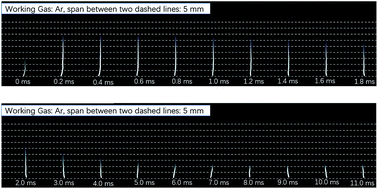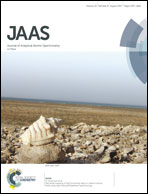Investigation of self-ignition characteristics of the microwave plasma torch
Abstract
The traditional method for ignition of plasma sustained with the microwave plasma torch (MPT) is by touching the central tube with a metal rod or with the aid of a spark from a Tesla coil, which might put the operator in danger of microwave leakage or might need an additional high-voltage circuit. The resonant characteristics and electric field distribution at the opening end of the torch, especially between the intermediate tube and inner tube of the torch, were simulated. It was shown that by slightly extruding the inner tube, microwave energy can be easily coupled into the ignition region of the MPT. A torch with such configuration was tested and shown to be easily self-ignited. The ignition process was also investigated with a high-speed camera. Therefore, an additional igniter is no longer needed in MPT atomic emission instrumentation, which leads to significant simplification in its construction, enhancement of its usability and reliability, and being beneficial for the commercialization of MPT-AES (MPT atomic emission spectrometry) technology.



 Please wait while we load your content...
Please wait while we load your content...